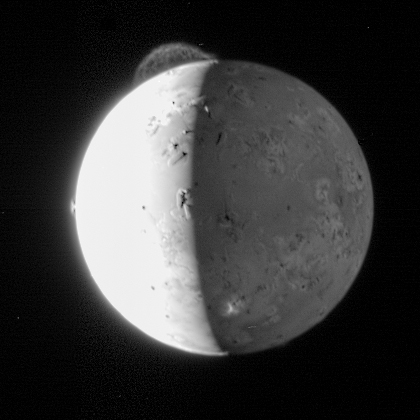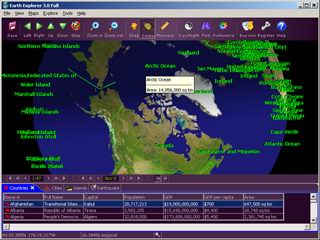Category: Record images
-

Io is still the prefered destination for volcano watchers
Io, a Jupiter satellite, has long been the only place -out of good old Earth- where presently active volcanoes could be observed presently. It fascinated me even when the satellite was joined by other bodies in the Solar system. Today NASA confirms us that Io is still the best place where you should go and…
-

Nearly 2 tera-pixels in USGS Earth Explorer
The United States Geological Survey (USGS) Earth Explorer v4.5, is providing a tremendous amount of details with the stated 1m/pixel in the United States (but only 20m/pixel outside of the US). Since the Earth surface is about 510,065,600,000,000 square meters (according to Wikipedia), this leads to a total of around 1,188 giga-pixel world image (plus…
-

623 marine blue mega-pixels
In the context of a campaign to protect whales from intense hunting and killing all over the world, the Whale and Dolphin Conservation Society created a gigantic image representing a life-sized blue whale that you can check in details from your computer. A good half giga-pixel of blue whale – to observe with a magnification…
-

416 megapixels of true RGB image data
This is the promise of the Press Release by BetterLight. Their new Super10K-HSâ„¢ scanning back is a hell of a big data cruncher producing 416 MP per scan.
-
1.5 giga-pixel for the Machu Pichu
A nice image of an marvellous archeological site (the Machu Pichu in Peru) still full of the echoes of a glorious past, Inca history. Thanks to Scott Howard, you can visit this billion and a half pixels assembled from 400 individual images.
-
Designing a 3.2 giga-pixel camera for astronomy
Today, this is not a record image that we show, but the publication of a scientific paper about the design of an camera for astronomy to be installed in a giant telescope (8.4m), probably in Chile. The 3.2 giga-pixel LSST camera will produce approximately half a petabyte of archive images every month. These data need…